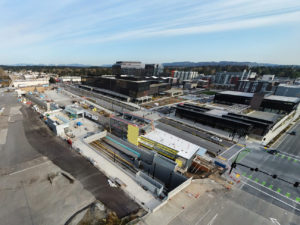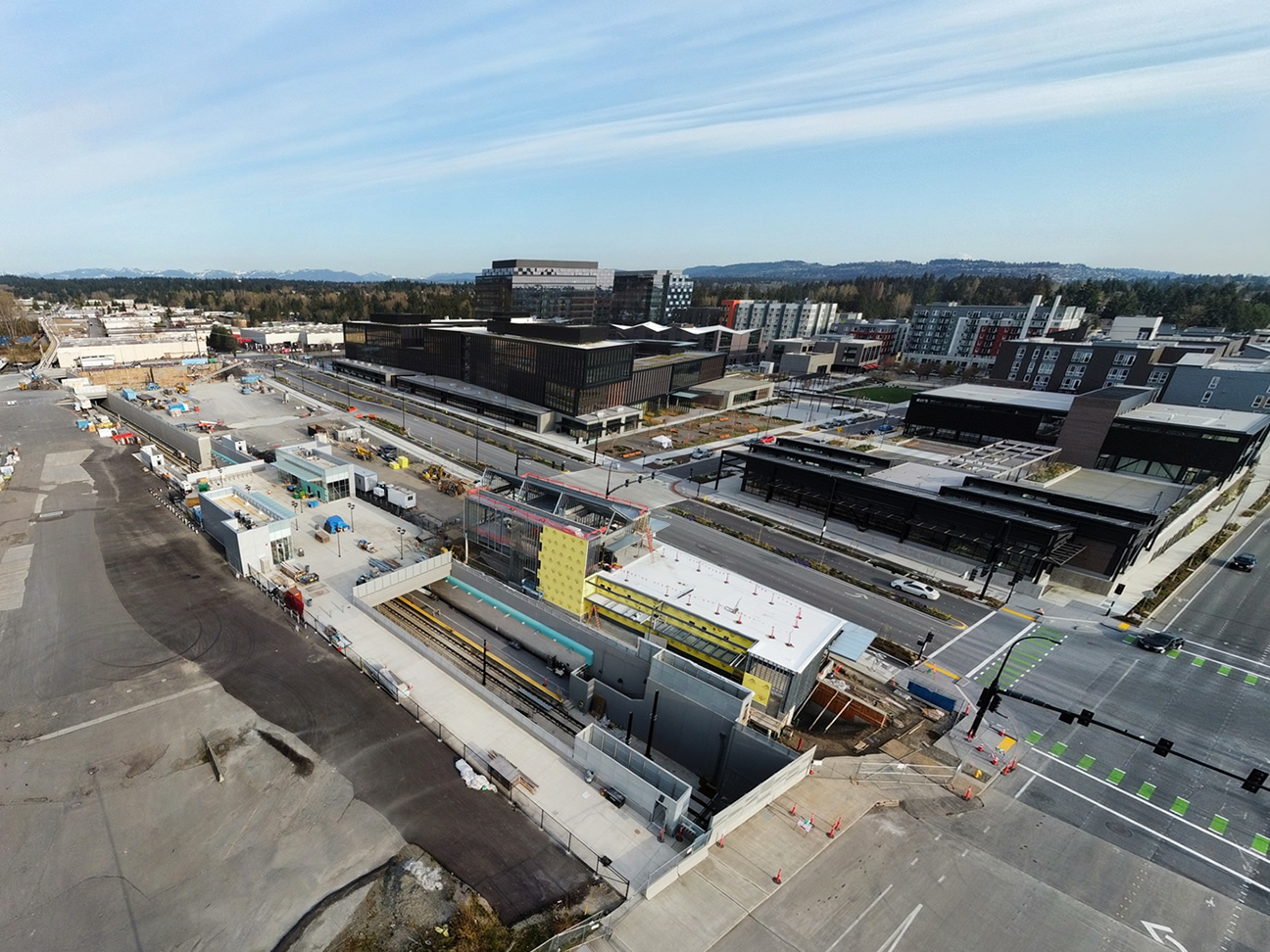Four promising ideas for catalyzing transit oriented development in the City of Bellevue enjoy broad and deep support among residents of Washington’s fifth largest city, a survey conducted a few weeks ago for the Northwest Progressive Institute and the Bellevue Housing Research Coalition has found.
Average support for the four ideas we asked about totaled 75.75%, or more than three-fourths of respondents. Average opposition totaled just 18.75%.
The Bellevue Housing Research Coalition — a project of NPI, Complete Streets Bellevue, the Sightline Institute, Eastside For All, and the Housing Development Consortium (HDC) — set out this past summer to gain a better understanding of how people in Bellevue feel about the local housing market and proposals being studied by city staff and the Bellevue City Council to make it easier for people in Washington’s fifth largest city to find attainable and affordable homes.
We released our initial findings on September 12th and a second set of findings at the end of the month. On October 3rd, we released a third set of findings, and last week, we released a fourth set of findings.
As October draws to a close, we have more heartening data to share.
Here’s the TOD ideas question we asked and the responses we received:
QUESTION: Please indicate whether you support or oppose each of the following ideas about transit-oriented development in the City of Bellevue.
IDEAS & ANSWERS
Allow mixed use development (like apartments with stores and doctor’s offices underneath) anywhere in the city with good transit access
Support: 89% Oppose: 9% Not sure: Strongly Somewhat Somewhat Strongly 2% 62% 26% 4% 5% ——— Authorize the construction of duplexes, triplexes and quadplexes – including a mechanism for separate ownership – near all major transit hubs
Support: 79% Oppose: 14% Not sure: Strongly Somewhat Somewhat Strongly 7% 49% 30% 6% 8% ——— Acquire property near light rail stations for housing projects with public funds and partner with affordability-focused developers to build new homes there
Support: 71% Oppose: 21% Not sure: Strongly Somewhat Somewhat Strongly 8% 41% 30% 10% 12% ——— Let developers exceed normal building height limits near all major transit hubs
Support: 64% Oppose: 31% Not sure: Strongly Somewhat Somewhat Strongly 5% 36% 28% 13% 19% ———
Our housing-focused survey of 475 Bellevue city residents was in the field from Monday, August 15th, through Friday, August 19th, 2022.
The poll was conducted entirely online for the Northwest Progressive Institute and its partners by Change Research. It has a modeled margin of error of 5.2%.
Since 2008, Bellevue has been getting ready for a huge transportation shift that will reshape travel to and from the Eastside as well as within it: the opening of Sound Transit’s East Link / Line 2 light rail line. Most of the construction on Line 2 is now finished, and the agency has begun testing out trains on the tracks, as you can see in these really cool videos that we recorded earlier this year.
Line 2 will provide fast, frequent, reliable, high capacity transit service between many neighborhoods in Bellevue. It will link the city together with Seattle, Mercer Island, Redmond, and points beyond. Neighborhoods directly served by the line include Surrey Downs, Downtown, Wilburton, the Spring District, Bel-Red, and Overlake. The Spring District and Overlake in particular have experienced construction booms in recent years as developers have seized the opportunity to create housing, retail, and commercial office space near future light rail stations.
Despite this progress, affordable and attainable housing in Bellevue remains out of reach for many residents. The City Council and city staff have been pondering how to address the urgent need for more housing by studying a range of ideas for updating the city’s housing strategy. Our research shows that taking additional steps to encourage transit oriented development would be welcomed by residents. Even the least popular of the ideas we tested — letting builders exceed normal building height limits near all major transit hubs — had 64% support.
In a previous open-ended question that preceded this and our other ideas questions (What do you think the Bellevue City Council should do to make housing more affordable?), we received a few comments about transit oriented development from residents who are eager to see the city invest in housing options that are paired with freedom of mobility as well as better transit.
“Continue to endorse ADU’s, mixed used development (housing & commercial). Higher density along bus routes,” said a Northwest Bellevue homeowner.

“Change zoning to allow high density next to light rail and transit lines,” said a Lake Hills homeowner.
A West Lake Sammamish homeowner added: “Make transit easier for non-residents to commute into Bellevue for work.”
“More affordable housing apartments in city center and better transportation to suburbs,” said a Northeast Bellevue renter who presumably is referring to the city’s outlying neighborhoods in addition to neighboring cities like Redmond.
“Allow DADUs and make it easier for residents to provide long term rentals for young professionals at reasonable cost. Incentivize developers and iron out red tape to build lower cost rental housing near transportation hubs and shopping centers,” said a Bridle Trails homeowner.
“Allow upzoning, apply rent control, invest in public transportation,” said a downtown renter.
We were particularly happy to see that more seven in ten respondents reacted positively to the idea of acquiring property near light rail stations for housing projects with public funds and partnering with affordability-focused developers to build new homes there. In Seattle, the Cedar Crossing project adjacent to the Roosevelt light rail station (toured by NPI staff while it was under construction) built 254 affordable apartments that have maximum income thresholds.
Cedar Crossing by Bellwether Housing is an example of the kinds of projects that our respondents have indicated they definitely want to see in Bellevue.
Because the market is not delivering enough affordable homes, residents want the city to step up and take a greater “hands on” role in ensuring that there are housing options for people in every income bracket.

